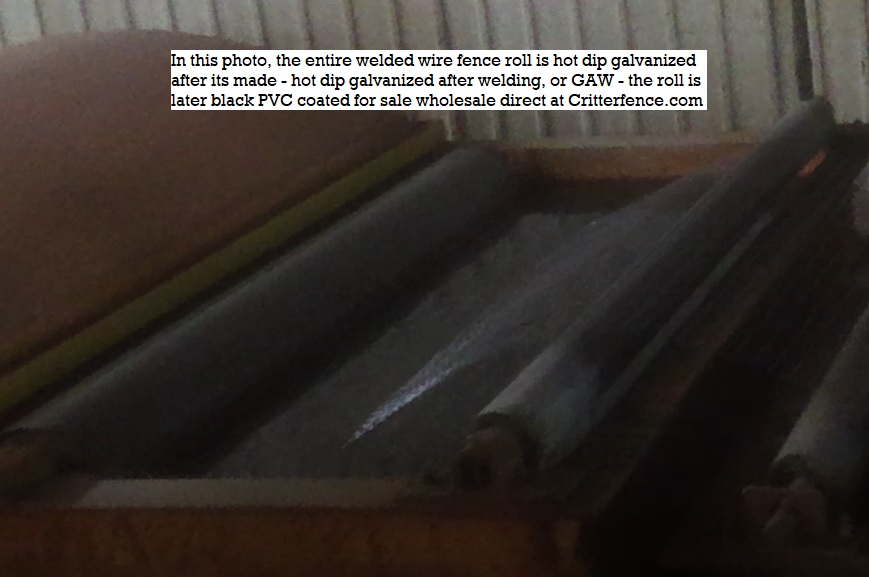Wire Fence Galvanization Types
There are different types of protective coatings and finishes on metal steel wire fence. It's important to choose the right product for your application.
Below are some examples of what is available on the market, and why offer only one type to our customers:
Electro Galvanized - (Least Protective)
- Zinc is electro-deposited on bare wire then spooled
- Spooled wire is then woven (hex mesh, fixed knot) or welded (welded wire mesh, hardware cloth) into wire fence.
- The wire fence roll is then coated again (plain galvanized, class 1, 2 or 3) or PVC coated.
- Less expensive - uses less zinc to galvanize the entire fence roll at once
- Short useable lifespan outdoors - 3-5 years depending on the specific fence and it's use
The disadvantage of this process is the wire joints (knotted or welded) are not galvanized and will rust. This galvanization type is not engineered for fence to soil contact. We don't offer this type of fencing to our customers or suggest they use it. It's most often found in big box stores or mass marketed online.
Hot Dip Galvanized Before Welding / Weaving - (Better)
- Bare wire is entirely dipped in zinc then spooled. Uses more zinc than electro-galvanization above.
- Spooled wire is then woven (hex mesh, fixed knot) or welded (welded wire mesh, hardware cloth) into wire fence.
- The wire fence roll is then coated again (plain galvanized, class 1, 2 or 3) or PVC coated.
- More expensive than electro galvanization - uses more zinc to galvanize the fence roll but less expensive than hot dip galvanized after welding (below)
- Medium lifespan outdoors - 5-7 years depending on the specific fence and it's use
For the same reasons as above, the disadvantage of this process is the wire joints (knotted or welded) are not galvanized and will rust. This galvanization type is not engineered for fence to soil contact. We don't offer this type of fencing to our customers or suggest they use it. This process is better than electro-galvanization but for our specific application (fence to keep animals in or out) it's not recommended.
Hot Dip Galvanized After Welding / Weaving - (BEST)
- The start of the process uses bare, uncoated wire spools
- Spooled wire is then woven (hex mesh, fixed knot) or welded (welded wire mesh, hardware cloth) into wire fence.
- The wire fence roll is then entirely dipped in zinc, galvanizing the entire fence roll including the welded or woven joints. Uses much more zinc than the above two processes.
- The wire fence roll then entirely zinc coated again (for plain galvanized rolls - class 1, 2 or 3) or PVC coated
- Most expensive - uses much more zinc to galvanize the fence roll
- Engineered for fence to soil contact - can be overlapped and staked to the ground or buried in the ground
- Engineered for salt spray contact for coastal or marine applications
- Up to 25 years of useful life depending on the specific fence and it's use
The advantage of this process is the the wire joints (knotted or welded) are galvanized and will not rust. This galvanization type is engineered for fence to soil contact.
This is the only type of fencing we offer to our customers or suggest they use. It's unique and specific to this type of fence application where customers overlap fence on the ground or bury it in the ground. It also offers the best all around resistance to corrosion - examples include coastal fence installations, using this fencing as bottom wire for pens, cages, coops and more. It offers the best protection available on the market.
